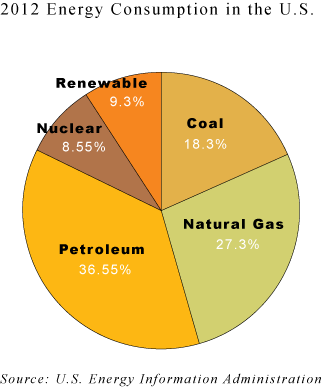What I like about renewable energy is that when it fails, we don't have radioactive fish.
Two years after the March 11, 2011 tsunami, the Fukushima nuclear power plant is a problem, with 400 tons of water contaminated every day (and stored in more containers than could fit in Yankee Stadium). Radioactive Bluefin tuna are showing up in California, though at levels of radiation that are not considered to be "unhealthful." The full price of the tsunami at Fukushima will be determined about 40 years from now, when the power plant is fully decommissioned and the health reports are all in. TEPCO is apologetic and working hard to clean up the mess, in a thankless, hostile, natural environment; this year's tsunami season brings more challenges. The company had to be bailed out by Japan and has become a curse world for the world.
General Electric designed the Mark I containment system, which failed at the Fukushima power plant. In fairness, it's hard for anything to survive a magnitude 9 earthquake and tsunami, which is why renewable, less toxic energy costs less by every measure -- from dollars and cents, to dollars and sense, to health, and to our planet -- than radioactive isotopes. This is not a Tree Hugger idea. It is a reality that many companies on our side of the Pacific are now facing up to. The decommissioning of nuclear power plants has begun in the U.S., and in a manner so quiet that investors may not even realize they hold a radioactive investment portfolio.
On June 7, 2013, Southern California Edison (SCE) announced plans to permanently retire Units 2 and 3 at San Onofre Nuclear Generating Station. On October 16, 2013, SCE accused Mitsubishi of designing defective replacement steam generators, "a failure which led to the permanent shutdown of the plant and caused billions of dollars in harm," according to SCE's press release. I wouldn't want to be holding any of SCE's preferred stock right now, even though SCE has reassured their investors that SCE's cost of the decommissioning will only be $3 billion, of which $2.7 billion has already been collected, and that customers will pick up the tab of any shortfall. TEPCO is stark proof that the mandatory decommissioning funds held by utility companies can be a rounding error of the true cost of containing radioactive waste.
On August 27, 2013, Entergy Corporation announced plans to mothball its Vermont Yankee Nuclear Power Station in Vernon, VT. Entergy says it has enough funds set aside for the decommissioning process, however additional funds will be needed for spent fuel handling and storage. The decommissioning decision was "driven by sustained low power prices, high cost structure and wholesale electricity market design flaws for Vermont Yankee plant," according to Entergy, in their press release.
Dominion Nuclear is shutting down its 556-megawatt Kewaunee Power Station permanently "based purely on economics," according to David Heacock, the president. Duke Energy recently abandoned a nuclear project in Florida. France's Electricite de France, one of the biggest nuclear investors in the world, has focused their sights on renewable energy in the U.S.
Renewable energy has increased from 6 percent of the national consumption in 2000 to 9.3 percent today, while nuclear energy has been declining since its peak in 2007. (2007 was the highest energy usage year on record.) Judging from the mothballing that has begun this year, the exodus from nuclear and the renaissance of renewables are only beginning.
Energy Consumption in the U.S. by Source
Quadrillion BTU, in 2012
Coal:17.37
Natural Gas:26.000
Petroleum:34.688
Nuclear:8.050
Total Renewable8.825
Total All Energy95.100
Source: U.S. Energy Information Administration
Cheaper renewable energy, human fallibility and natural disasters have pushed the cost of nuclear into the unaffordable, even for conservatives who are still iffy on the climate change data. That's ultimately good news for our planet (if it's not already too late). The bad news is for customers and investors, who will be picking up the tab. If you do not have a way of generating your own electricity, or using substantially less of it, you'll be paying more for electricity in the months and years to come.
This is where solar panels and solar water heaters, at least for those living in sunny states, are very attractive investments, bringing with them tax credits and free energy for life. In most states, the utility company pays you when you produce more solar energy than you use. Solar products are much more affordable today than they were five years ago. Generating your own electricity is about the only way that you can avoid getting stuck with the tab for the nuclear decommissioning exodus that has begun.
Learn more about how to reduce your energy bill in my book, The ABCs of Money.
For investors, it's always a good idea to get out of the old and into the new. You wouldn't want to be invested in the horse and buggy when cars were invented, and you don't want to be left holding a bag of uranium when everyone else is solar gazing.
It's hard to find a utility without any nuclear connection. Click to access a list of the Top 10 Green Utilities, provided by the U.S. Department of Energy. National Grid does not own or operate any nuclear power plants (though it does purchase energy for its customers in the northeastern part of the U.S.). National Grid has also been at the forefront for committing to more renewable energy in the U.S., distinguishing itself as one of the most forward-thinking green utilities. Check out my Huffington Post blog/interview with Tom King, National Grid's U.S. president, from August 2, 2013.

